

A parametric curve in the plane is a pair of functions

where the two continuous functions define ordered pairs (x,y). The two equations are usually called the parametric equations of a curve. The extent of the curve will depend on the range of t and your work with parametric equations should pay close attention to the range of t . In many applications, we think of x and y "varying with time t " or the angle of rotation that some line makes from an initial location.
Let's look at the graph of

for ![]()
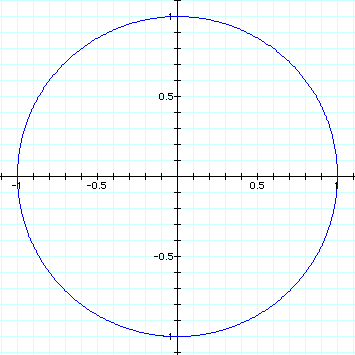
How can we change the graph?
What would constants in front of t do to the graph?
Let's take a look at the family of graphs

We have already investigated the case where a and b both are 1.
Let's look at the case where a = 1, and b = 2.
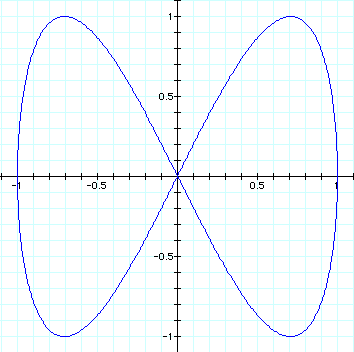
Now, let's consider the case where a = 1, and b = 3.
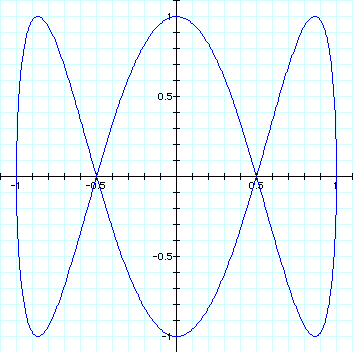
There appears to be a pattern.
b = 1, 1 "loop"
b = 2, 2 "loops"
b = 3, 3 "loops"
Will the pattern hold for b = 4?
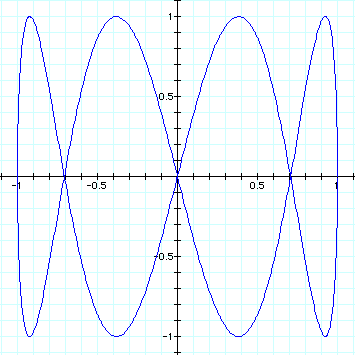
Now, we need to consider the impact that the constant a has on the graph.
Will the constant a affect the graph in the same way that b did, except along the vertical axis?
Let's consider the case where a = 2, and b = 1.
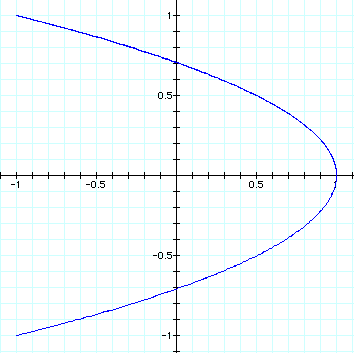
Perhaps we can gain some insight by examining the case where a = 3, and b = 1.
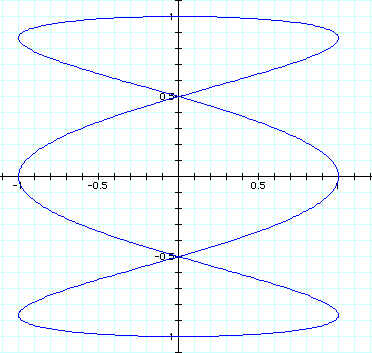
Now let's examine the case where a = 4, and b = 1.

It appears that the "loop" theory needs to be abondoned. Notice, though that when
a = 2, the graph crossed the vertical axis twice.
a = 4, the graph crossed 4 times.
It appears that for the constant a, even numbers and odd numbers affect the graph in different ways.
Odd numbers affect the graph in a pattern similar to the way the constant b did, except in respect to the vertical axis
Even numbers seem to indicate how many times the graph will cross the vertical axis in our interval.


The pattern appears to hold for the even values of a.
The pattern also holds for the odd values of b.


Negative values for a and b result in graphs that are identical to the graphs with positive values of a and b. This may be a result of reflection across the lines of symmetry of the graph.
This exploration focused only on integer values of a and b. It would be interesting to investigate values of a and b between 0 and 1.
Click here for an exploration of

Click here to return to Julie's main page.